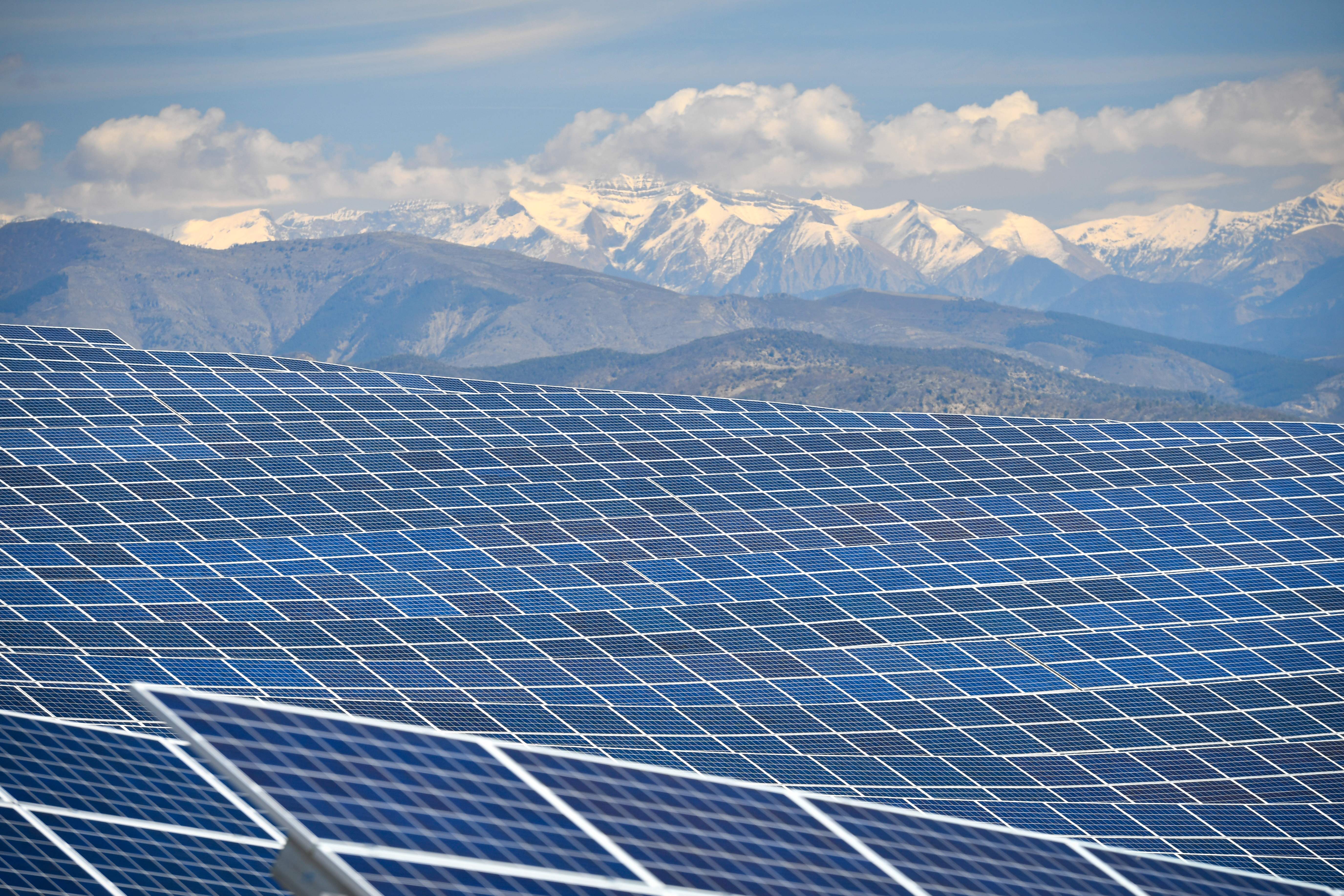The boom in 'green' energy
Climate change and falling prices are driving a revolution in solar, wind, and other renewables

Climate change and falling prices are driving a revolution in solar, wind, and other renewables. Here's everything you need to know:
Can renewables replace fossil fuels?
Renewable energy sources like solar, wind, and hydroelectricity are already overtaking fossil fuels as the dominant means of power generation in some parts of the developed world. In 2019, 72 percent of power plant additions utilized renewables, according to the International Renewable Energy Agency (IRENA). For the first time, the European Union generated more electricity (38 percent) from renewables in 2020 than from fossil fuels (37 percent). The U.S. still relies heavily upon oil (37 percent), natural gas (32 percent), and coal (11 percent), but the country is on pace this year to generate more energy from renewables than from coal. Overall, renewables now account for roughly 11 percent of U.S. energy production — with about a quarter of that derived from wind power, two-fifths from biofuels and hydroelectricity, and a 10th from solar. Rapid growth in renewables is underway: In 2020, electricity producers installed 37 gigawatts of new solar and wind capacity, shattering the record of 17 GWs from 2016. "The grid is changing so much faster than anyone expected," said Daniel Cohan, an associate professor of civil and environmental engineering at Rice University.
The Week
Escape your echo chamber. Get the facts behind the news, plus analysis from multiple perspectives.

Sign up for The Week's Free Newsletters
From our morning news briefing to a weekly Good News Newsletter, get the best of The Week delivered directly to your inbox.
From our morning news briefing to a weekly Good News Newsletter, get the best of The Week delivered directly to your inbox.
What's driving the transformation?
Cost-effectiveness. Solar panel producers have steadily achieved greater efficiencies in manufacturing and in generating more power from each individual solar cell. This has led to vast reductions in price, so that solar and wind power now have surpassed coal — and even natural gas — as the cheapest forms of power generation. While the price of coal power largely remained the same from 2009 to 2019, the price of solar power fell by 89 percent and onshore wind power by 70 percent, according to Lazard. The U.K., Norway, and other countries now generate a large share of their electricity from offshore wind farms, and that potential also exists for the U.S., with seven states now studying how to set up arrays. "Right now, the economics of burning coal just don't make sense," said Joe Daniel, who monitors the power sector for the Union of Concerned Scientists. The boom in renewables has another economic benefit: It has created hundreds of thousands of jobs: About 446,000 Americans worked in the solar and wind industries as of 2019 — more than double the 211,000 in coal mining and other methods of fossil-fuel extraction.
How did prices fall?
The space and satellite industries, which rely heavily on solar power, drove the engineering. In 1956, the cost of a solar panel capable of generating the same amount of power as just one of today's panels would have approached $600,000. From 1976 to 2019, the price of a single watt of solar capacity fell 99.6 percent to just $0.38. And many engineers expect the trend to continue. The so-called learning rate of solar energy is a very high 20.2, meaning that every time global capacity doubles, the cost of solar modules declines by 20.2 percent. Wind has an even higher learning rate of 23.
A free daily email with the biggest news stories of the day – and the best features from TheWeek.com
Are emissions down?
While emissions are slowing in the Western world, global CO2 emissions have risen from nearly 32 billion tons in 2009 to almost 37 billion in 2019, according to the Global Carbon Project, as developing nations such as India and China modernize and produce more energy, mostly through fossil fuels. In 1990, 81 percent of the world's total energy consumption came from oil, gas, and coal. Last year, the figure was still 80 percent — and largely because of a global slowdown brought on by the pandemic. "We have the solution," said Dave Jones, senior electricity analyst at Ember, a climate-focused think tank. "It's working. It's just not happening fast enough."
Why not?
Unlike fossil-fuel power plants, solar and wind power plants only generate electricity when the sun shines and the wind blows. The batteries needed to store power for the proverbial cloudy day are improving rapidly but are still not cheap enough — or able to store power for long enough periods — to rely heavily on. A breakthrough in battery technology will be needed for solar and wind to become mainstays of electric grids. Geothermal energy, however, does not require battery storage and has enormous potential. The U.S. leads the world in geothermal electricity production, or the process of mining the heat from Earth's crust to produce electricity. Although it accounts for only 0.4 percent of total U.S. utility-scale electricity production, the technology could someday provide almost limitless amounts of power. Geothermal power plants situated near hot spots in Earth's crust could tap the intense heat and steam by drilling down 1 or 2 miles. The geothermal company AltaRock Energy estimates that "just 0.1 percent of the heat content of Earth could supply humanity's total energy needs for 2 million years." Jamie Beard, who runs the Geothermal Entrepreneurship Organization at the University of Texas at Austin, called it an "engineering problem that, when solved, solves energy."
Auto companies going electric
Automakers are betting that electric vehicles (EVs) are the future. The switch is being powered by continued improvements in the lithium-ion battery packs that fuel these cars. In 2020, the average price of lithium-ion battery packs fell to $137 per kilowatt-hour (kWh) — down 89 percent from 2010, reports BloombergNEF, an energy research organization. Last year, prices for batteries used in e-buses in China actually broke $100/kWh for the first time, a historic threshold that will allow automakers to create and sell EVs at prices comparable to internal combustion vehicles. The so-called learning rate for lithium-ion battery packs is 18, which is quite high; it means that for every doubling of total volume, the price falls 18 percent. Currently, EVs constitute only about 3 percent of the global auto market, but falling battery-pack prices point to a much bigger future. President Biden has ordered that the federal government develop a plan to make its fleet of 645,000 vehicles go completely electric. General Motors recently announced that by 2035 it would make only EVs. "It is a game changer," said Harvard environmental law professor Jody Freeman of GM's plan.
This article was first published in the latest issue of The Week magazine. If you want to read more like it, you can try six risk-free issues of the magazine here.


